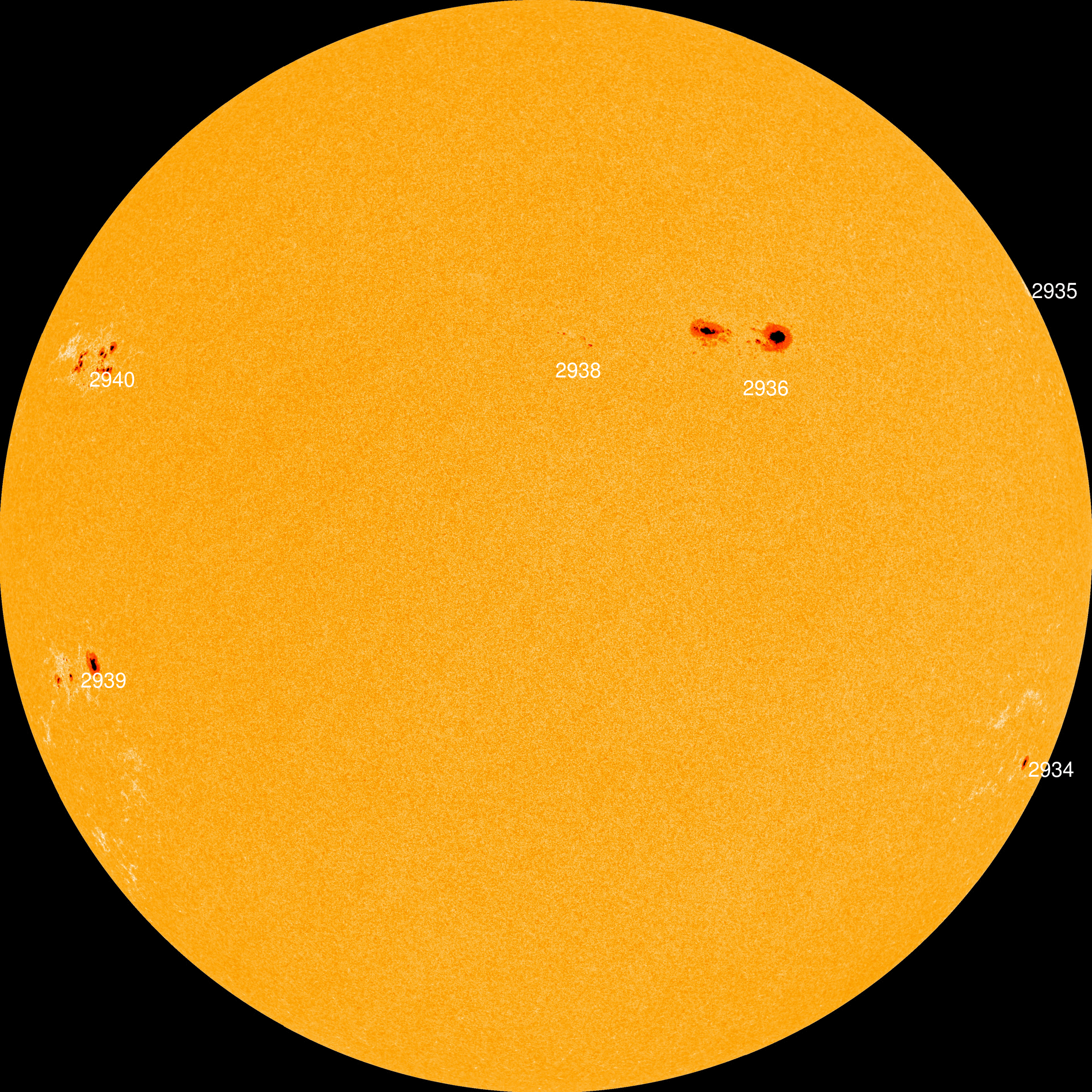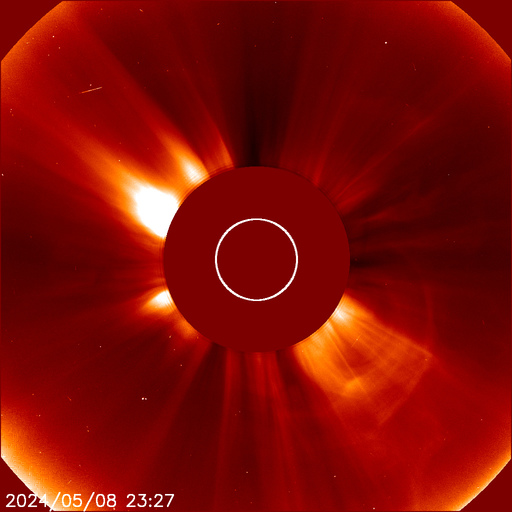Messier tour for students in my after-school astronomy club
I used the Worldwide Telescope web client on a huge interactive screen in my wife’s classroom to give the students a mini-tour of the Messier objects. Before I started, I discussed who Charles Messier was, and why he created a catalog of celestial objects.
I started with M1 – the Crab Nebula, I showed them all the different multifrequency images of it. I then zoomed WAY into the high-rez Hubble mosaic.
Next was M2, a globular cluster – the students had never heard that term, so I described what globular cluster was, and showed them that there were quite a few of them in the Messier catalog. I then jumped the the end of the catalog, to show them how many objects there were.
On the last page of the catalog, M104 – the Sombrero Galaxy stuck out like a sore thumb – so I clicked on it and got several OOooHHs! from the students – I then showed M104 in IR, where the dust ring REALLY shows up well. While looking at M104, I discussed galactic halos, and how much larger they are than they appear.

I hopped around the catalog showing the students open clusters, nebulas and more galaxies – I think one young lady said the M101 was her favorite – yea… it is quite spectacular!


Jupiter appears in the southwestern sky after sunset this week – a very thin crescent Moon appears near Jupiter on Feb. 2nd.

The Moon appears high in the southwestern sky at dusk on Feb. 5th – making it a great target for telescopes or binoculars this weekend.

The Moon appears high in the southern sky at dusk on Feb. 7th.

Mercury, Venus and Mars appear in the southeastern predawn sky all week.


- The New Moon occurs on Feb. 1st. – the part of the Moon facing Earth is completely in shadow.
- After Feb. 1st, the Moon will be a Waxing Crescent – visible toward the southwest in early evening.
- The First Quarter Moon occurs on Feb. 8th – visible Visible high in the southern sky in early evening.

If you click on the Moon image above, or click this link, you will go to NASA’s Moon Phase and Libration, 2022 page – it will show you what the Moon looks like right now. If you click the image on that page, you will download a high-rez TIFF image annotated with the names of prominent features – helpful for logging your lunar observations!
Moon News

The Sun has six named sunspots and a couple plage areas inthe southern hemisphere.
Spaceweather.com says “A coronal mass ejection (CME) is heading for Earth. Estimated time of arrival: Feb. 2nd.” [View CME Animation]

Videos courtesy of NASA/SDO and the AIA, EVE, and HMI science teams.
You can view the Sun in near real-time, in multiple frequencies here: SDO-The Sun Now.
You can create your own time-lapse movies of the Sun here: AIA/HMI Browse Data.
You can browse all the SDO images of the Sun from 2010 to the present here: Browse SDO archive.
Amateur Solar Astrophotography

Solar Corona
Solar wind speed is 404.5 km/sec ▲ with a density of 3.7 protons/cm3 ▼ at 1555 UT.
Click here to see a near real-time animation of the corona and solar wind from the Solar & Heliospheric Observatory (SOHO).
Sun News:
Time to update my Sun lecture, again!

- Near-Earth Objects (NEOs) discovered this month: 256, this year: 256 (+181), all time: 28,177 (+105)
- Potentially Hazardous Asteroids (PHAs): 2253 (+2 updated 2022-02-01)
- Total Minor Planets discovered (MPC): 1,166,250 (+23,143 updated 2022-02-01)
- Total Minor Planets discovered (NASA): 1,113,527 (updated 2021-08-17) – This value has not changed for months.
Upcoming Earth-asteroid encounters:
| Asteroid | Date(UT) | Miss Distance | Velocity (km/s) | Diameter (m) |
| 2022 BD5 | 2022-Feb-01 | 3.7 LD | 17.8 | 13 |
| 2022 BR4 | 2022-Feb-02 | 19.8 LD | 20.3 | 65 |
| 2022 BY | 2022-Feb-02 | 15.6 LD | 5 | 22 |
| 2022 BM5 | 2022-Feb-03 | 6.8 LD | 8.3 | 26 |
| 2022 BT4 | 2022-Feb-03 | 6.8 LD | 12.3 | 13 |
| 2022 BH2 | 2022-Feb-04 | 3.9 LD | 19.9 | 33 |
| 2022 BF1 | 2022-Feb-04 | 6.2 LD | 13.1 | 32 |
| 2022 AA | 2022-Feb-04 | 6.6 LD | 4.3 | 43 |
| 2018 CA1 | 2022-Feb-05 | 9.8 LD | 15.1 | 32 |
| 2022 BL5 | 2022-Feb-06 | 16.5 LD | 13.7 | 29 |
| 2022 BS3 | 2022-Feb-06 | 14.2 LD | 8.3 | 29 |
| 2022 AV4 | 2022-Feb-07 | 19.2 LD | 3.4 | 22 |
| 2022 BX4 | 2022-Feb-08 | 8.6 LD | 7.8 | 13 |
| 2007 UY1 | 2022-Feb-08 | 13.9 LD | 6.6 | 89 |
| 2022 BS4 | 2022-Feb-08 | 13.1 LD | 10.9 | 31 |
| 2022 BN4 | 2022-Feb-12 | 18.2 LD | 8.2 | 25 |
| 2020 DF | 2022-Feb-14 | 12 LD | 8.6 | 20 |
| 2018 CW2 | 2022-Feb-18 | 2.2 LD | 10.8 | 25 |
| 2020 CX1 | 2022-Feb-18 | 7.2 LD | 8.2 | 54 |
| 455176 | 2022-Feb-22 | 14 LD | 25.1 | 257 |
| 2017 CX1 | 2022-Feb-23 | 15.2 LD | 5 | 8 |
| 2016 QJ44 | 2022-Feb-24 | 19.6 LD | 8.5 | 324 |
| 2021 QO2 | 2022-Feb-25 | 20 LD | 11 | 65 |
| 2020 UO4 | 2022-Feb-28 | 18.5 LD | 2.1 | 7 |
| 138971 | 2022-Mar-04 | 12.8 LD | 12 | 749 |
| 2021 UL7 | 2022-Mar-04 | 11.5 LD | 2 | 23 |
| 2020 DC | 2022-Mar-06 | 3.9 LD | 4.9 | 16 |
| 2021 EY1 | 2022-Mar-10 | 10.1 LD | 15.5 | 16 |
| 2015 DR215 | 2022-Mar-11 | 17.5 LD | 8.3 | 290 |
| 2018 GY | 2022-Mar-13 | 11.9 LD | 10.7 | 43 |
| 2022 BX1 | 2022-Mar-13 | 20.1 LD | 11 | 166 |
| 2016 FZ12 | 2022-Mar-19 | 2.2 LD | 8.3 | 16 |
| 2020 SQ | 2022-Mar-21 | 2.8 LD | 6 | 12 |
| 2013 BO76 | 2022-Mar-24 | 13.3 LD | 13.8 | 295 |
| 2011 GE3 | 2022-Mar-26 | 7.6 LD | 7 | 22 |
| 2012 FX35 | 2022-Mar-26 | 13.7 LD | 5.9 | 25 |
| 2010 GD35 | 2022-Mar-29 | 17.7 LD | 12.5 | 43 |
| 2020 FW5 | 2022-Mar-30 | 8.9 LD | 13.1 | 27 |
Asteroid News:

On January 31, 2022, the NASA All Sky Fireball Network reported 8 fireballs!
(8 sporadics)

Fireball News:
Fireball over Wisconsin Jan. 20th!
If you see a bright meteor or a fireball, please REPORT IT to the American Meteor Society and the International Meteor Organization!

Position of the planets & several spacecraft in the inner solar system on February 1st.
Position of the planets in the middle solar system:

Position of the planets in the outer solar system:

Solar System News

See a list of current NASA missions here: https://www.jpl.nasa.gov/missions?mission_status=current

ex·o·plan·et /ˈeksōˌplanət/, noun: a planet orbiting a star other than the Sun.
* Confirmed Planets Discovered by TESS refers to the number planets that have been published in the refereed astronomical literature.
* TESS Project Candidates refers to the total number of transit-like events that appear to be astrophysical in origin, including false positives as identified by the TESS Project.
* TESS Project Candidates Yet To Be Confirmed refers to the number of TESS Project Candidates that have not yet been dispositioned as a Confirmed Planet or False Positive.
Exoplanet News:
January 27, 2022: 5 Planets and New ExoClock Ephemerides
One of this week’s five new planets is b Cen AB b, an imaged planet that orbits two stars, each more massive than any other star known to host planets. Read the ESO media release and the Janson et al. discovery paper for details. The other four planets are OGLE-2018-BLG-0383L b, KMT-2021-BLG-0322L b, OGLE-2018-BLG-0532L b, and LTT 1445 A c.
We’ve also added orbital ephemerides for 180 transiting planets from the ExoClock project, which is part of the Atmospheric Remote-sensing Infrared Exoplanet Large-survey (ARIEL) space mission.
Access all of these new data from the Planetary Systems Table and its companion table, Planetary Systems Composite Parameters, which offers a more complete table of planet parameters combined from multiple references and calculations. – NASA

SpaceWeather.com Realtime Aurora Gallery: https://spaceweathergallery.com/aurora_gallery.html
Latest Aurora Oval Forecast

- Visit an International Dark Sky Park: https://www.darksky.org/our-work/conservation/idsp/parks/
- If you live in Michigan, visit the Michigan Dark Skies site: https://sites.lsa.umich.edu/darkskies/

W.A.S. Meeting: Feb. 7th 7:30 PM (Eastern)
Hey, my astronomy club is fantastic! Meetings are open to the public – join us!
STEM
Messier Tour: M3

The globular cluster M3 was the first object in the Messier catalog to be discovered by Charles Messier himself. Messier spotted the cluster in 1764, mistaking it for a nebula without any stars. This misunderstanding of M3’s nature was corrected in 1784 when William Herschel was able to resolve the cluster’s individual stars. Today it is known to contain over 500,000 stars.
M3 is notable for containing more variable stars than any other known cluster. The brightness of a variable star fluctuates with time. For some variable stars, their period relates to their intrinsic luminosity, so astronomers can use those stars’ brightness fluctuations to estimate their distances. This makes them extremely useful for measuring distances to deep-sky objects. M3 contains at least 274 variable stars. – NASA

At a distance of about 33,900 light years, M3 is further away than the center of our Galaxy, the Milky Way, but still shines at magnitude 6.2, as its absolute magnitude is about -8.93, corresponding to a luminosity of about 300,000 times that of our sun. M3 is thus visible to the naked eye under very good conditions – and a superb object with the slightest optical aid. – messier.seds.org

Cover Image: Globular Cluster M3. Credit: Adam Block/Mount Lemmon SkyCenter/University of Arizona
Messier Object List: [Link]
Software Apps used for this post:
NASA Eyes on the Solar System: an immersive 3D solar system and space mission simulator – free for the PC /MAC.
Stellarium: a free web-based planetarium app. It’s a great tool for planning observing sessions.
SpaceEngine – Explore the universe in 3D and VR!
Worldwide Telescope – operated by the American Astronomical Society (AAS).





